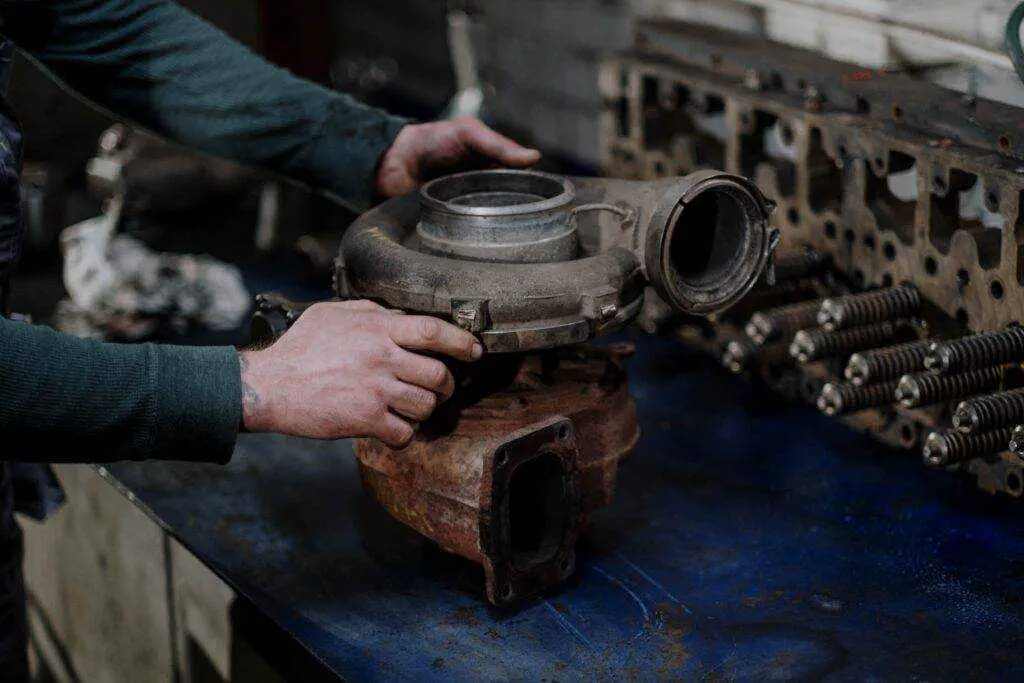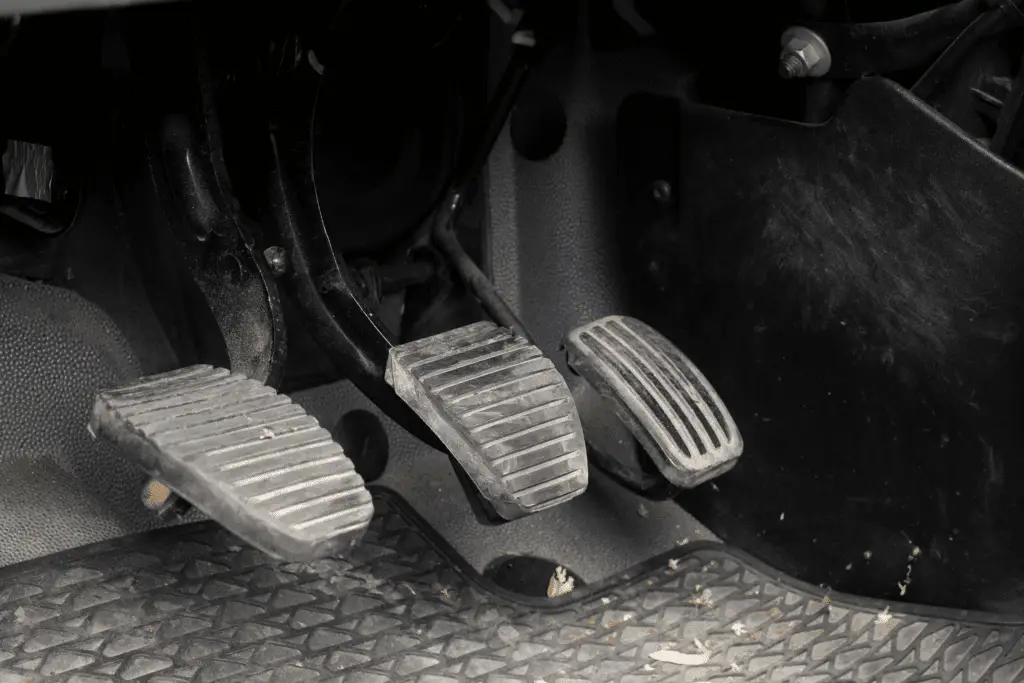You’re driving along smoothly at a steady speed when your car suddenly jerks as if you’ve run over a bump in the road. But the pavement is perfectly flat, and the jerking persists inconsistently. This abrupt and erratic loss of power can be alarming and make it hard to maintain control.
What causes this annoying and potentially dangerous drivability issue? When a car jerks while driving at constant speed, it indicates some type of engine misfire or transmission problem is disrupting power delivery.
In this detailed guide, we’ll explore all of the common culprits behind jerking at speed, tips for an accurate diagnosis, both quick fixes and professional repairs, and preventative maintenance steps. Read on to get to the bottom of why your car jerks while cruising and how to create smooth, uninterrupted acceleration again.
What Causes Car Jerks while driving at constant speed?
A variety of defective components or malfunctions can lead to your engine randomly misfiring or losing power, resulting in abrupt jerking sensations when trying to hold a constant speed. Here are 12 of the most common culprits:
1. Clogged or Dirty Fuel Injector
Fuel injectors spray a fine mist of fuel into each engine cylinder, where it mixes with air and is ignited by the spark plug. But over months and years of operation, debris, and deposits can partially clog the tiny nozzle opening on the injector.
This impedes optimal fuel flow, causing the cylinder to run too lean on occasion and misfire. When one or more cylinders misfire, you feel it as a jerking or hesitation as you drive. Individual injectors may exhibit different degrees of clogging, so the jerking is intermittent rather than constant.
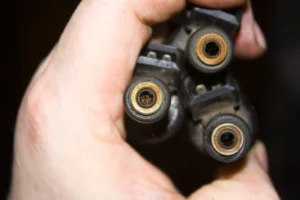
Potential causes of fuel injector clogs include:
- Low-quality or contaminated gasoline
- Deposits left by fuel additives
- Carbon buildup from combustion
- Rust particles and dirt entering from the fuel tank
- Failed fuel filter allowing debris passage
- Infrequent driving or letting the car sit
- Not changing oil resulting in varnish deposits
The only remedy for a partially clogged fuel injector is professional ultrasonic cleaning or replacement. While fuel injector cleaner additives can help postpone the inevitable, they don’t dissolve significant buildups.
2. Fouled or Worn Out Spark Plugs
Spark plugs are subjected to incredibly high temperatures and voltages during engine operation. Over months and years, they can become fouled by leaking oil or fuel or simply wear out from constant heat cycling.
Worn or oil/fuel-fouled spark plugs cannot fire properly to ignite the compressed air/fuel mixture in the cylinder. This leads to occasional misfires, especially under load at highway speeds. New properly gapped spark plugs are required to restore smooth performance and eliminate jerking.
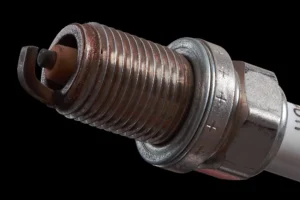

3. Malfunctioning Mass Airflow Sensor
The mass airflow (MAF) sensor is a critical engine management component. It reports intake air volume readings to the powertrain control module so it can calculate the proper air/fuel ratio and ignition timing.
If the MAF sensor wire becomes contaminated with dirt or oil, or the sensor electronics fail, it will transmit incorrect airflow data to the PCM. The engine controller is then unable to determine the right fuel trim, potentially causing random misfires and jerking as you drive. Replacing the defective mass airflow sensor is the typical repair.
4. Restricted Air Intake
Engines require massive volumes of air to mix with fuel for combustion. The air first passes through the air filter, which removes dirt and debris that could cause internal engine wear.
But if the air filter becomes excessively clogged with trapped particles, it chokes off the intake airflow rate significantly. This leads to an improper air-fuel ratio and causes cylinders to misfire as you drive, creating a jerking or surging sensation. Replacing the plugged air filter restores full airflow and smooth performance.
5. Malfunctioning Oxygen Sensor
The oxygen (O2) sensor is mounted in the exhaust stream and constantly reports residual oxygen content to the PCM. It allows the computer to precisely fine-tune the fuel trims for optimal combustion.
If this critical emissions sensor fails or drifts out of calibration, the computer receives faulty data for making fuel delivery adjustments. The wrong air/fuel ratio causes drivability issues like surging and jerking, especially under load at higher speeds. The oxygen sensor often requires replacement when it malfunctions.
6. Broken or Cracked Ignition Coil
Ignition coils amplify the low voltage from the battery to the very high levels needed to jump the gap on the spark plug and ignite the compressed air/fuel mixture. When coils begin to break down internally due to age, heat cycling, or oil leaks, they lose the ability to provide a consistent spark.
A weak or intermittent spark produced by a failing ignition coil leads to occasional misfiring as you drive. These random cylinder misfires manifest as jerking or hesitation at speed. Replacement of the defective coil pack is needed to resolve this problem.
7. Automatic Transmission Slipping
The hydraulically controlled automatic transmission relies on pressurized fluid to smoothly change gears. Low fluid levels, contaminated fluid, or worn internal components can allow gears or clutches to briefly slip during shifts.
This transmission slippage usually occurs more frequently as the transmission heats up from driving. The brief power interruptions caused by slipping lead to noticeable jerking and hesitation, especially at highway speeds. Preventative repairs like fluid changes and part replacements are key.
8. Torque Converter Malfunction
Within every automatic transmission is a torque converter, which multiplies engine torque to the rest of the drivetrain through fluid. issues like damaged stators or clutch lockup problems prevent seamless torque converter function.
Malfunctions inside the torque converter can cause brief power losses between the engine and transmission, perceived as jerking and hesitation when holding a steady speed. Replacement or overhaul of the torque converter by a transmission specialist is required.
9. Loose or Broken Motor Mounts
Motor mounts secure the engine to the chassis while isolating drivetrain vibration and engine movement from the rest of the vehicle. Over time, the rubber mounts can crack or deteriorate, allowing excessive engine rocking.
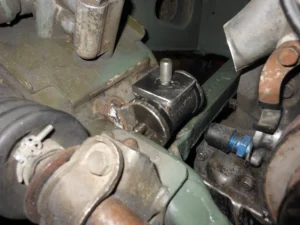

If motor mounts become excessively loose or break altogether, the engine is free to lift violently with the torque pulses as you accelerate. This vibration and impact against the mounts transmit jerking forces directly through the drivetrain, especially at higher speeds. Worn mounts need replacement.
10. Failing Fuel Pump
Electric fuel pumps mounted in the tank supply pressurized gasoline to the engine’s fuel injection system. But the flow rate diminishes as the pump internals wear out. Eventual failure leads to pressure drops and lean fuel conditions.
A weakening in-tank pump cannot maintain the optimal fuel system pressure as engine demands increase. This results in randomly lean cylinders and misfires, perceived as hesitation and jerking under load or at speed until pump repair or replacement.
11. Incorrect Ignition Timing
The ignition timing – when the spark plugs fire relative to the piston position – is vital for smooth combustion. Improperly advanced or retarded timing prevents ideal combustion and leads to weak misfires.
Computer-controlled engines with failing cam or crank sensors can develop timing issues leading to intermittent jerking. If the timing belt jumps teeth, manual resetting of the timing marks is required to eliminate misfires.
12. Intake Manifold or Vacuum Leak
The intake manifold distributes air drawn through the MAF to the cylinders. Cracks or loose connections in the manifold or any vacuum hoses allow unmetered air into the engine.
This vacuum leak causes an overly lean fuel mixture. The resulting misfires and stumbles are most noticeable when holding a steady throttle position, like cruising on the highway. Locating the intake leak and sealing it is key.
13. Engine Misfires
Misfires are one of the most common reasons you’ll feel jerking and intermittent power loss when trying to hold a constant speed. An engine misfire occurs when one or more of the engine’s cylinders fails to properly ignite the air-fuel mixture during the combustion process. This can cause a complete loss of power in that cylinder and uneven power delivery.
Misfires are most noticeable when accelerating and trying to add speed. But they can also cause light jerking or a slight power lag even when maintaining a steady throttle at cruising speeds. Frequent misfires essentially mean your engine is running on 5, 4, or even 3 cylinders rather than the full 6 or 8.
Addressing ignition system issues is key to resolving chronic engine misfires. A weak spark from fouled or worn spark plugs is a very common culprit. Anything that impedes the ignition system and spark can set off cylinder misfires.
How to Accurately Diagnose the Cause of Jerking
It takes methodical diagnostics under the hood, not guessing, to pinpoint exactly what’s causing those annoying intermittent jerking sensations:
Scan for trouble codes – OBD2 scanner fault codes point to issues with sensors, emission controls, or transmission.
Do a visual inspection – Look for damaged, loose, or disconnected vacuum hoses that could cause leaks.
Check fuel pressure – Use a gauge to test fuel system pressure for any deviations from specs.
Perform an injector balance test – This detects any injectors with reduced flow that misfire cylinders.
Verify ignition timing – Use a timing light while running to check for incorrect advance/retard.
Do a compression test – Weak compression indicates internal mechanical problems like bad piston rings or valves.
Check sensor PIDs – Look for MAF, O2, and crank/cam sensor readings that don’t make sense or fluctuate.
Inspect transmission fluid – Low, burnt, or dirty fluid causes slippage and hesitation.
Road test in different gears – Jerking in certain gears points to specific transmission issues.
Don’t throw parts at potential causes without confirming it first. By combining physical inspections with diagnostic tests and road testing, you can isolate the true root of the problem.
Quick Fixes to Try Yourself at Home
Before taking your jerky car to the mechanic or transmission shop, there are a few simple fixes you can try yourself:
Replace air filter – A severely clogged filter can restrict airflow. Replacing it takes minutes.
Change fuel filter – A blocked filter causes insufficient fuel pressure and misfires.
Inspect spark plugs – Replace visibly worn or fouled plugs that can misfire under load.
Clean mass airflow sensor – Use MAF cleaner spray and lint-free cloth to remove dirt.
Check vacuum hoses – Look for cracks and loose connections that cause leaks.
Top-up transmission fluid – Low fluid is a common source of slippage and jerks.
Reset transmission computer – Try disconnecting the battery to reset the jerking issues.
These quick and inexpensive DIY remedies are worth trying before paying for diagnostics. But if the jerking persists, professional repairs are needed.
When to Take it to a Professional Mechanic
While simple maintenance and parts swaps may provide temporary relief, if the root cause remains the jerking will inevitably return and worsen over time. These repairs require automotive expertise:
- Cleaning or replacing dirty fuel injectors
- Swapping defective oxygen sensors or mass airflow sensors
- Fixing faulty ignition coils, plug wires, or timing issues
- Transmission servicing and internal repairs
- Replacing damaged motor or transmission mounts
- Diagnosing vacuum leaks and unknown issues
- Engine control module tuning and programming
With advanced computer diagnostics tools and years of experience, professional technicians can accurately track down and fix elusive drivability gremlins. They also have the specialized equipment to handle transmission overhauls and engine repairs.
How to Prevent Future Jerking and Hesitation Issues
Regular proactive maintenance goes a long way toward avoiding jerking and hesitation problems down the road:
- Use quality gasoline and periodic fuel system cleaners to keep injectors deposit-free.
- Change engine air, fuel, and cabin air filters every 15-20K miles.
- Replace spark plugs at the manufacturer’s recommended intervals.
- Fix oil leaks promptly to prevent spark plug fouling.
- Keep up on scheduled transmission fluid changes.
- Inspect and replace deteriorating engine/transmission mounts.
- Check ignition timing and sensors like the MAF and O2.
Staying vigilant on vehicle servicing keeps critical ignition, fuel system, and emission components in optimum shape for clean, smooth power delivery. But at the first sign of car jerks while driving at constant speed, diagnose and resolve the cause before lasting damage occurs.
Frequently Asked Questions
Why is my car jerking at a constant speed?
Jerking or hesitation when cruising usually stems from an ignition or fuel system misfire. Faulty components like spark plugs, injectors, sensors, or worn timing chains/belts prevent proper combustion and cause intermittent power loss.
How do I keep my car from jerking while driving?
Start with simple checks like fuel, air, and oxygen sensors, spark plugs, and vacuum leaks. If that doesn’t reveal the cause, you’ll need professional diagnosis and repair of components like injectors, ignition parts, transmission solenoids, or torque converters.
Is car jerking a serious problem?
Jerking and surging are not normal and will worsen if left unchecked. Engine misfires lead to eventual failure. Transmission issues can severely damage gears. Get any persistent jerks diagnosed and repaired to prevent breakdowns.
Why is my car jerking in slow traffic?
At lower speeds, transmission problems like slipping between gears or torque converter lockup issues often manifest as jerking. Fouled spark plugs and bad sensors cause more jerking during acceleration from a stop.
Is car jerking a transmission problem?
Transmission component failures are a known cause of jerking and hesitation. But ignition misfires from issues like bad plugs, coils, injectors or sensors are more often to blame for jerking while holding any steady speed.
Is car jerking normal?
No, any jerking, hesitation, or inconsistent power delivery is abnormal. All cars have minor power fluctuations. But noticeable shuddering or loss of power signals an underlying problem in need of professional diagnosis and repair.
Summary
When your car jerks while driving at constant speed for no apparent reason, it points to an engine misfire or drivetrain issue that won’t fix itself. But with knowledge of the most common culprits, you can more easily track down the root cause. Remember to also follow solid maintenance practices that maximize the lifespan of ignition, fuel, and transmission systems. Deal with any hesitation or jerking promptly before lasting damage occurs. to content

